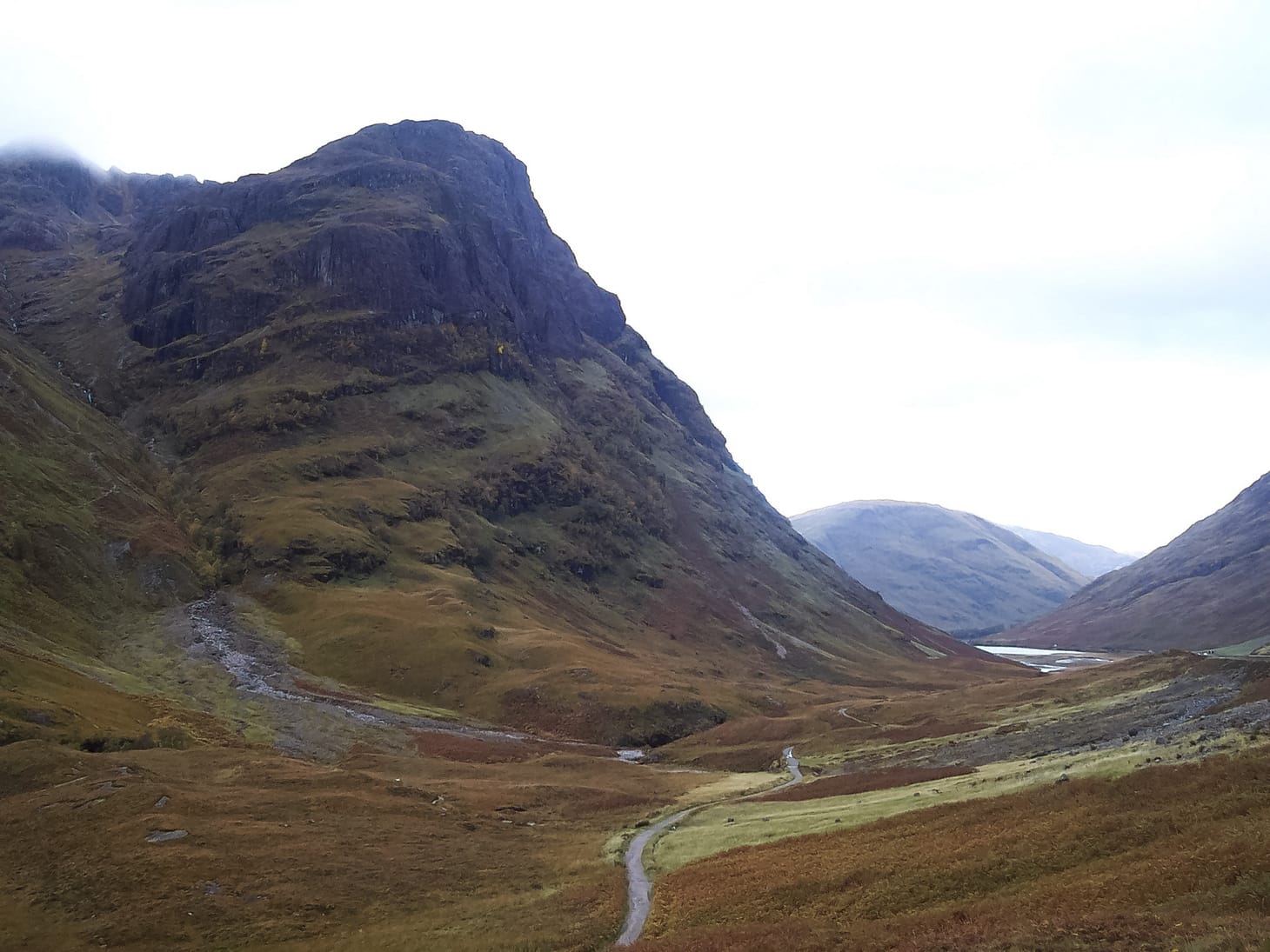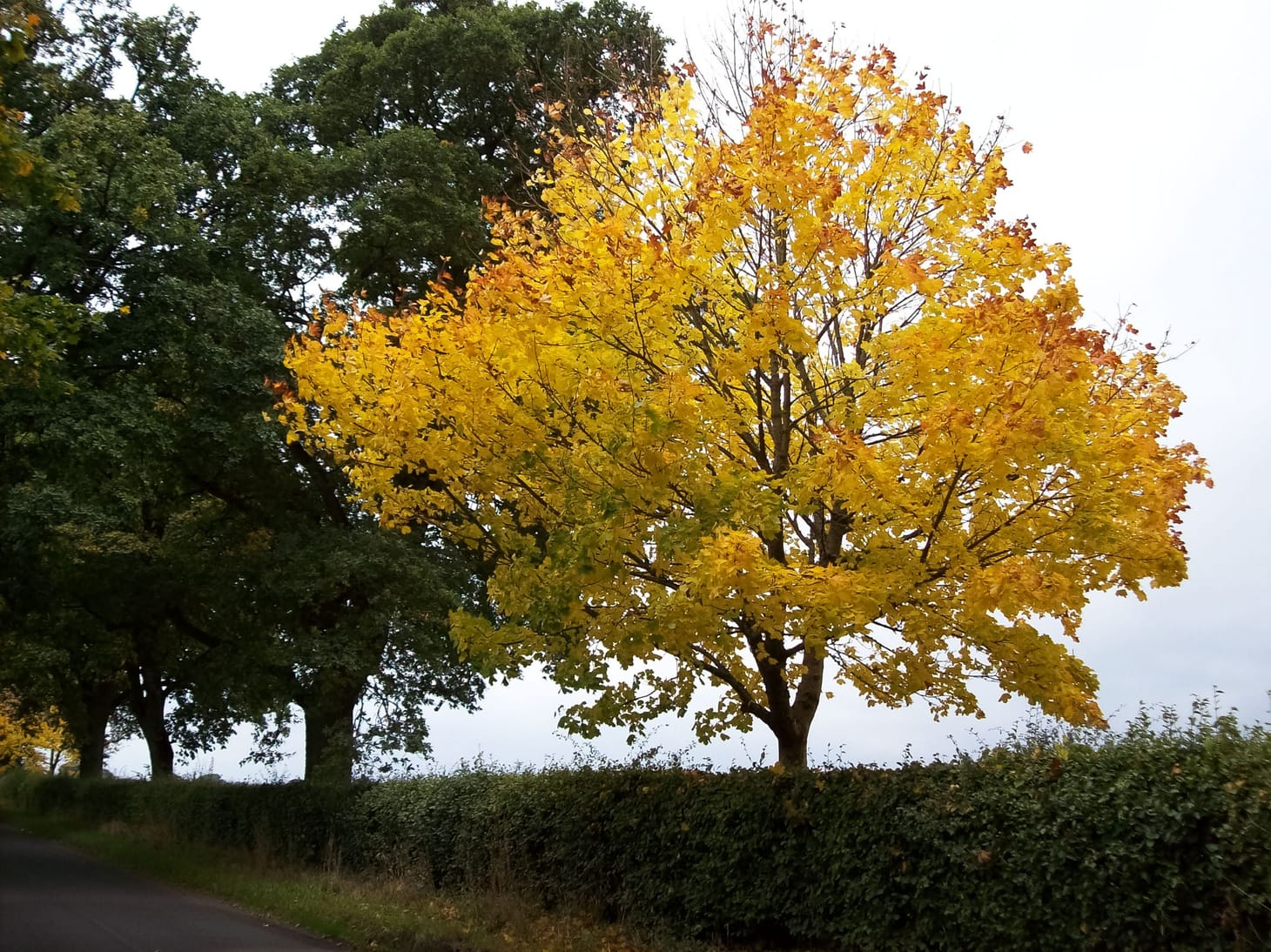Ode to the Samyang 12mm f/2 wide-angle lens
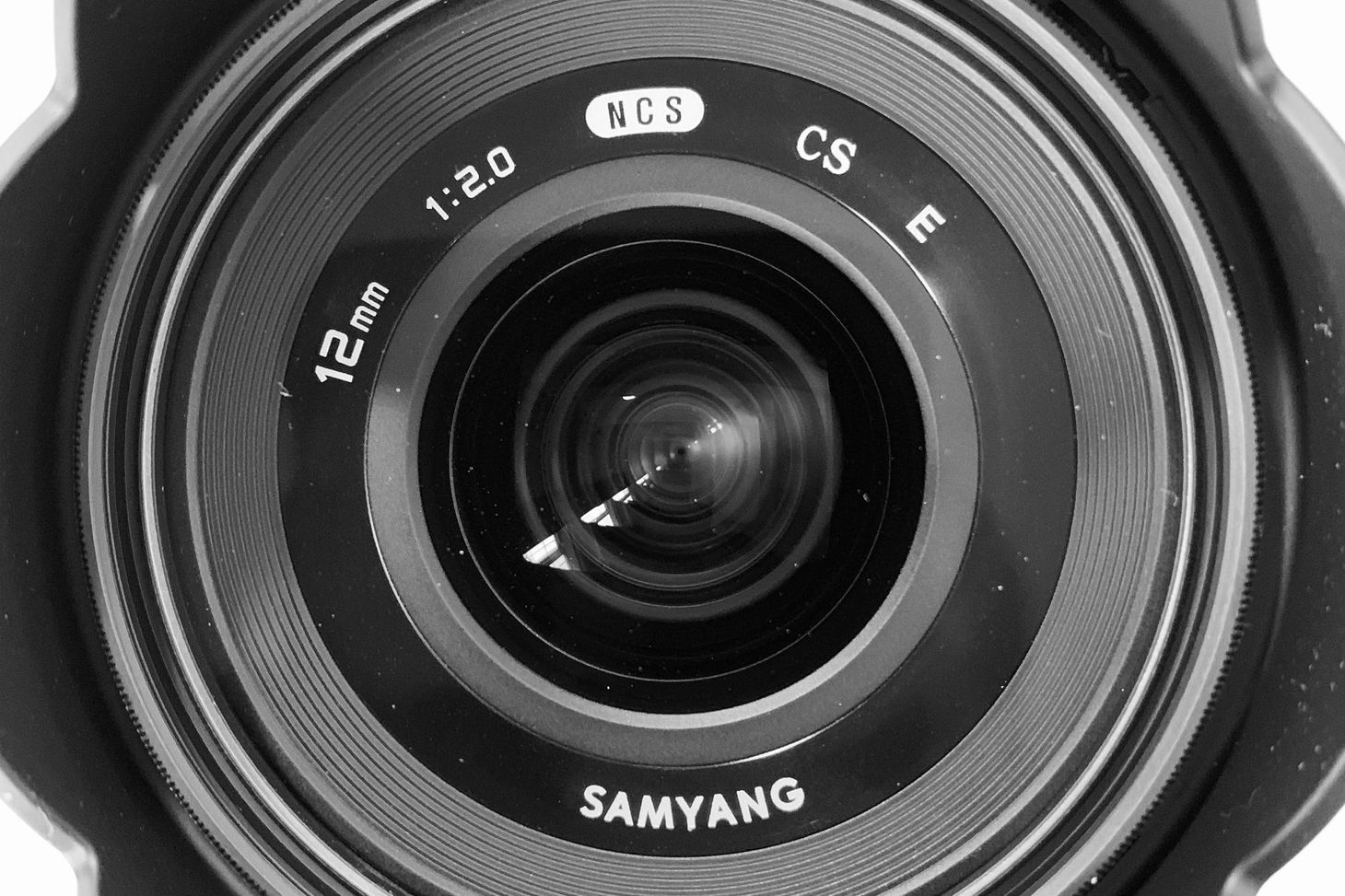
Over the last few years, this humble lens has surprised me with its versatility – and risen above all others to become a firm favourite.
In early 2016, I realised that my standard Fuji zoom lens was holding me back when it came to night-time landscape photography. It was competent, but it could be frustrating getting accurate infinity focus – especially while wearing gloves in the dark. I wanted something wider to capture starfields too. A little research threw up an affordable upgrade: the Samyang 12mm f/2 for APS-C mirrorless cameras.
At that time I was shooting with a Fujifilm X-E1, but the lens is available in a variety of mounts. To date I have used the Fujifilm X-Mount version and the Sony E-Mount version, both APS-C.
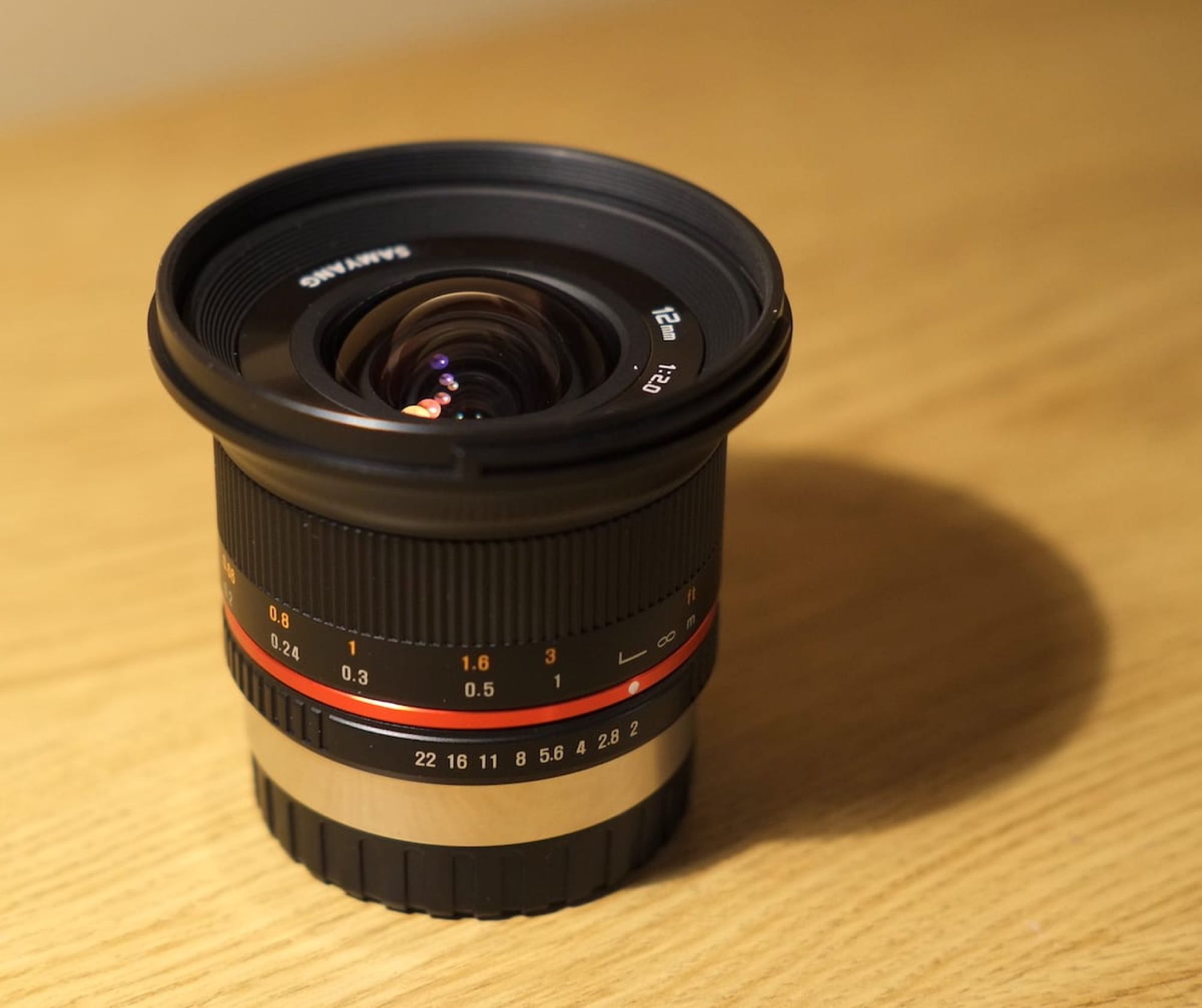
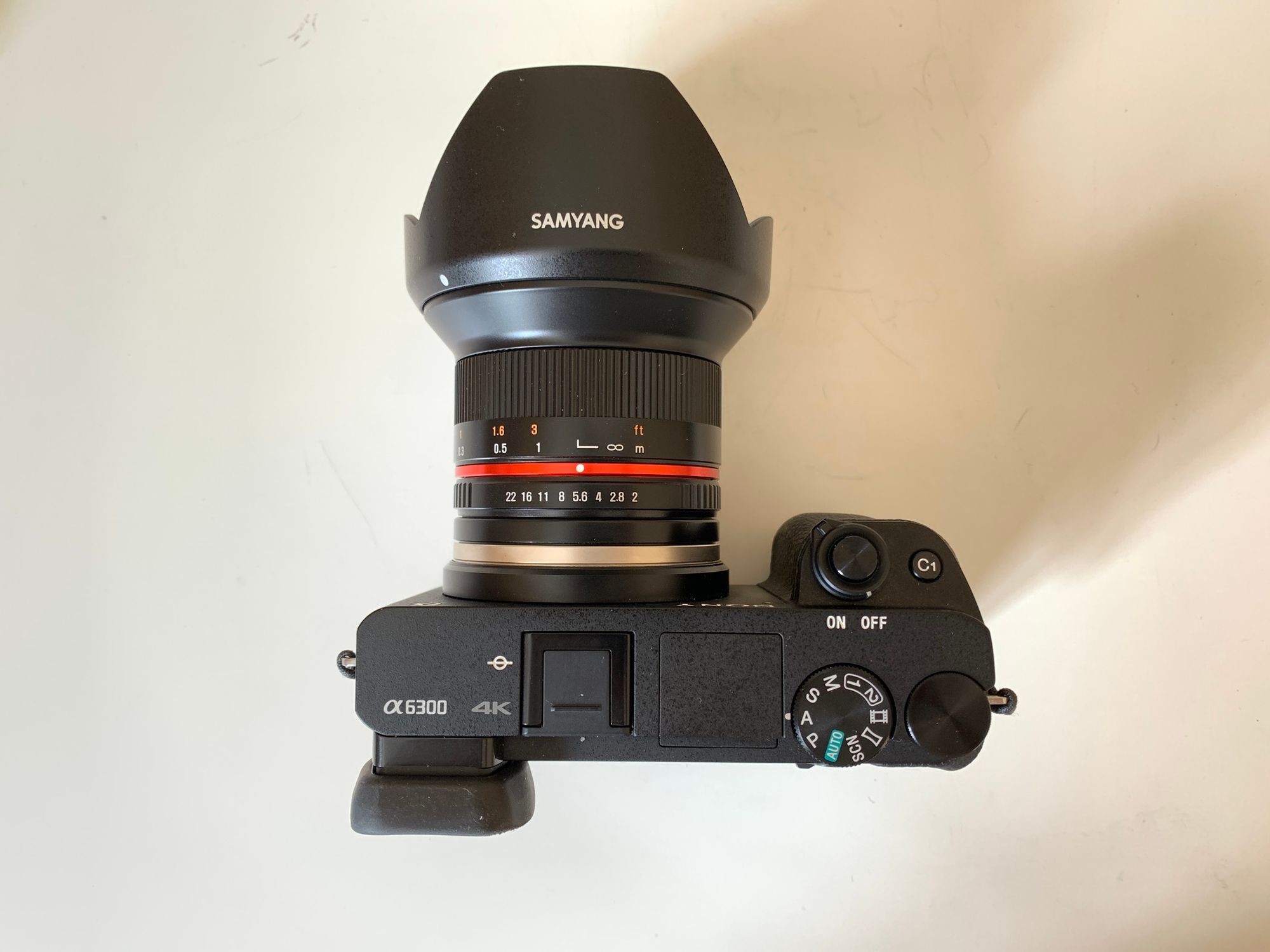
Don’t call this a review – call this a love letter to a lens that has helped me create some of the most worthwhile and memorable images of my career as an outdoor writer and photographer. Call this proof that you don’t necessarily need to spend thousands on top-spec glass to get a lens that fits your needs.
Many of these images have been published alongside my outdoor writing over the last few years. They are low-res samples optimised for web use. All images © Alex Roddie and all rights reserved; please don’t reproduce them without permission.
Specs
- Cost: can be found for around £300, or a little less on the used market
- Focal length: 12mm (APS-C version equivalent to 18mm in full-frame format)
- Autofocus: no; manual focus only
- Aperture range: f/2 to f/22; there’s a manual diaphragm control on the lens barrel with half-stop clicks
- Coverage: APS-C or Micro 4/3 depending on version
- Minimum focusing distance: 0.2m
- Filter size: 67mm with plastic filter thread
- Lens hood: included petal-shaped plastic hood, removable
- Weight: 260g
- Dimensions: 72.5x59mm
What I’ve found the Samyang 12/2 good for
Although I originally bought the 12/2 for astrophotography, I soon found that it works well for several different applications.
Night-time landscapes / astrophotography
The 12/2 has a few qualities that make it ideal for night-time landscapes:
- Extremely wide field of view
- Wide aperture
- Manual focus with a marked infinity point (I’ll come back to this in a moment)
- Excellent centre sharpness and good edge sharpness at wide apertures
- A reputation for reasonably well-controlled optical aberrations
I soon found that the 12/2 made astro work easy. Although I’ve heard that there’s some sample variation, as you might expect from a budget lens, both samples I’ve used have been very sharp in the centre from f/2, and sharp enough in the corners. Few aberrations are visible. Aberrations such as coma can be especially troublesome when photographing starfields – they can make stars towards the edges of the frame sprout distracting purple halos. While a little coma is visible in the extreme corners, it’s minimal.
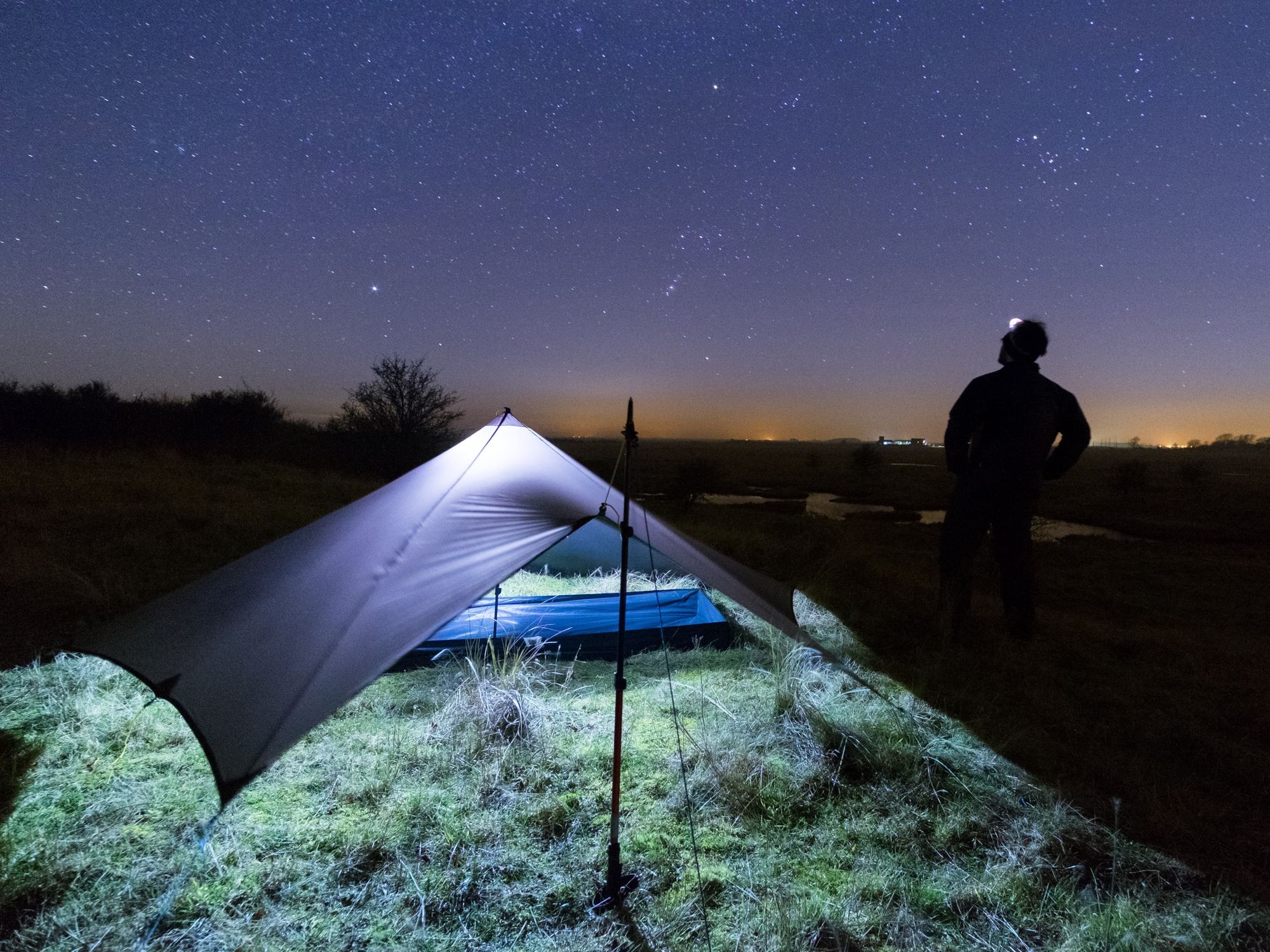
If you set the lens to infinity and f/2, and the camera’s own settings to something like ISO 1600 or 3200 with a shutter speed of about 25 seconds, you can capture clear and sharp images of the Milky Way. Similar images were possible with my kit zoom lens, but the image quality is better with the Samyang 12/2 due to its extra stop of light (which means I can use a lower ISO, reducing noise), handling is significantly better due to easy infinity focus, and a wider field of view is often desirable for this kind of photography. A wider angle means you can keep the shutter open for longer without creating star trails too.
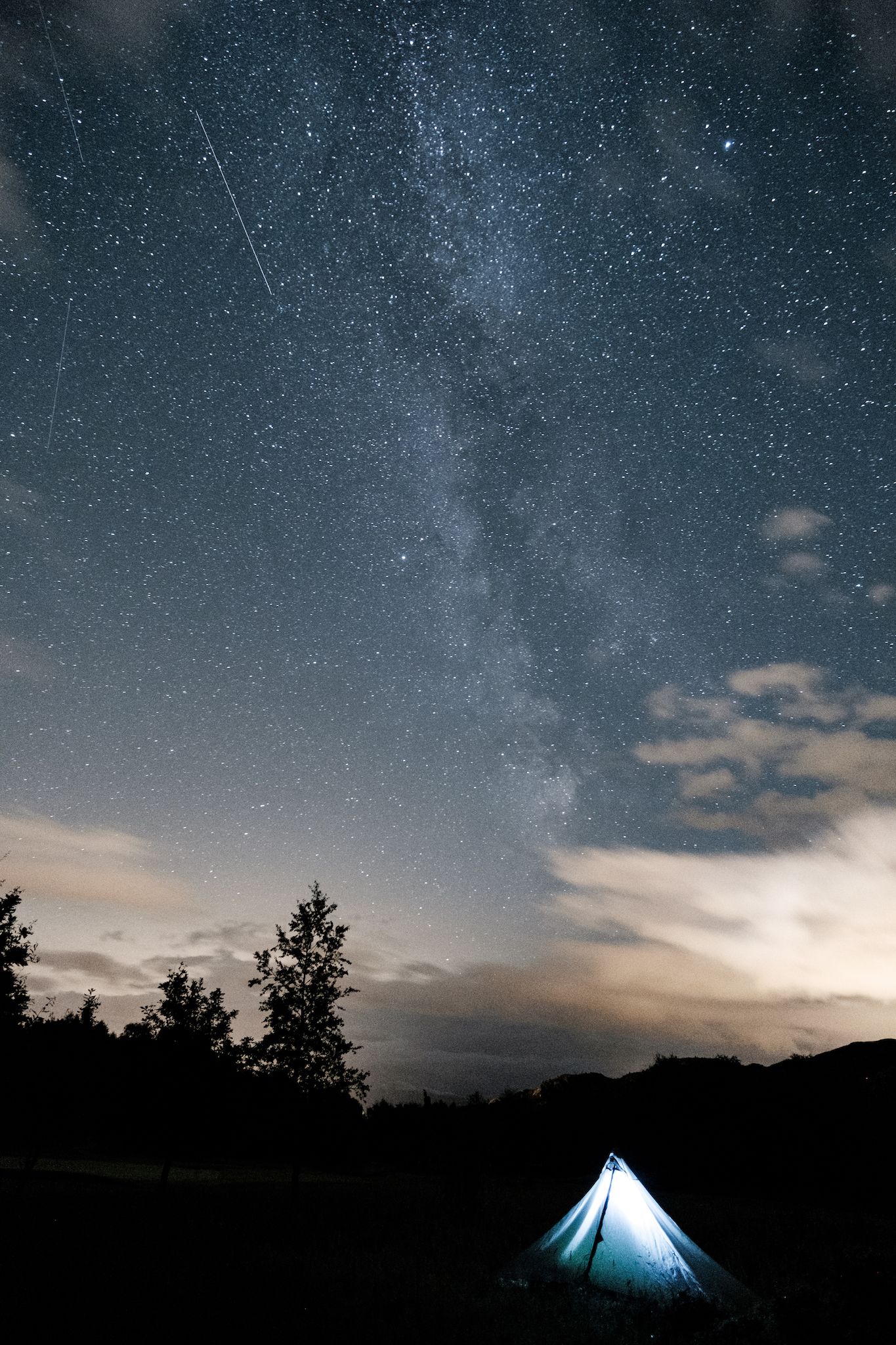
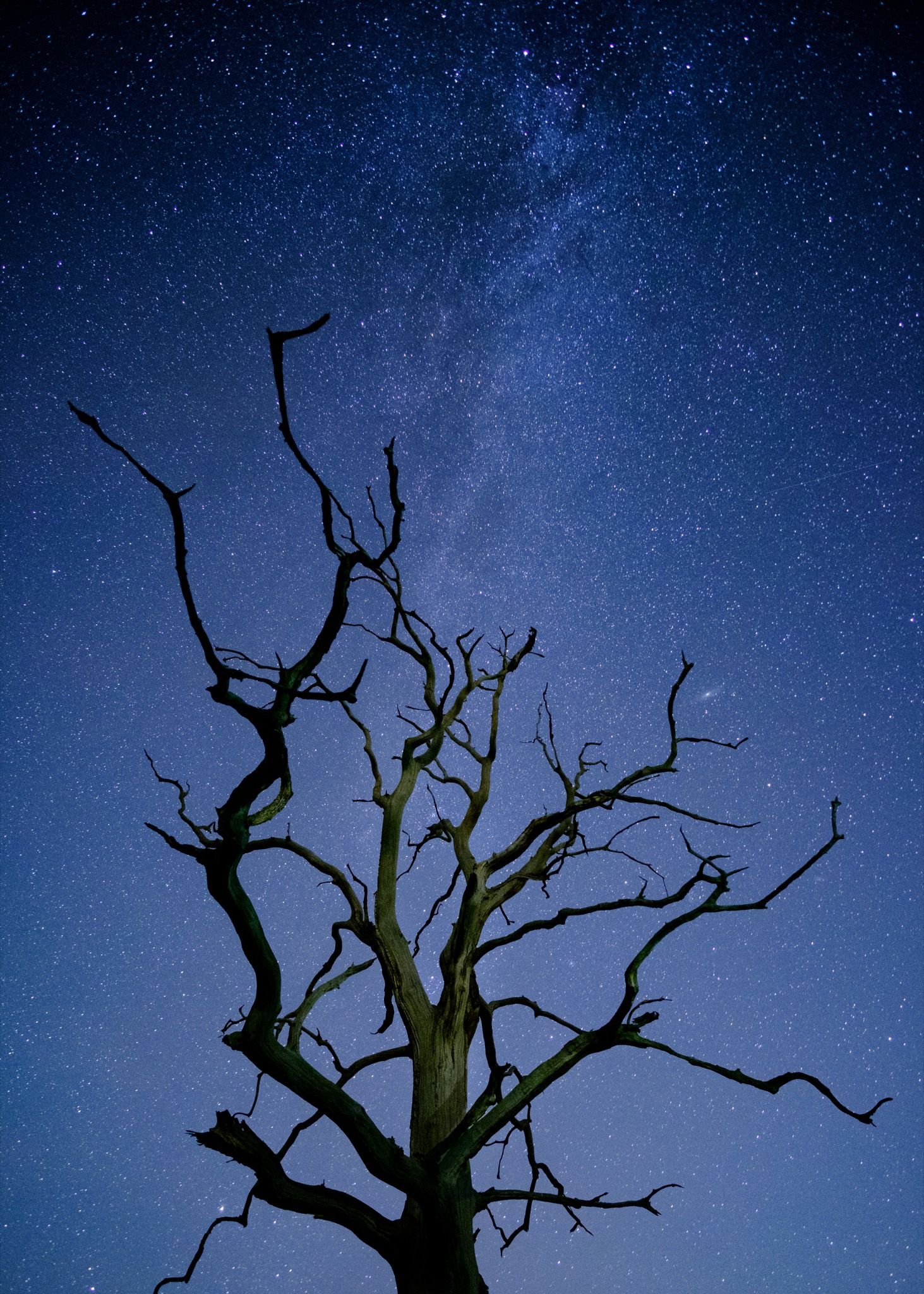
Now, about that infinity focus. The lens doesn’t have a hard infinity stop. It’s actually possible to focus slightly past infinity, but there is an infinity mark on the focusing scale just before the stop. Whether or not this matches up with infinity is down to sample variation. My first sample of the lens focused to infinity halfway between the infinity mark and the hard stop; my second sample seems to have an accurate infinity mark.
In practice this is not really a problem. Once you’ve figured out where infinity is on your particular lens, you can either mark it yourself or remember where it is. It’s still a lot easier than messing about trying to find infinity with the focus-by-wire systems commonly found in consumer zoom lenses on mirrorless cameras.
While I don’t think anyone would claim this is the best lens in the world for astrophotography, it’s probably the best compromise between cost and performance for mirrorless systems available today.
General-purpose landscape photography
In late 2016 I started using this lens for more and more general mountain and landscape photography. It took me a while to get used to the ultra-wide perspective, and I still find it challenging to compose with, but sometimes it’s the perfect angle of view for the subject.
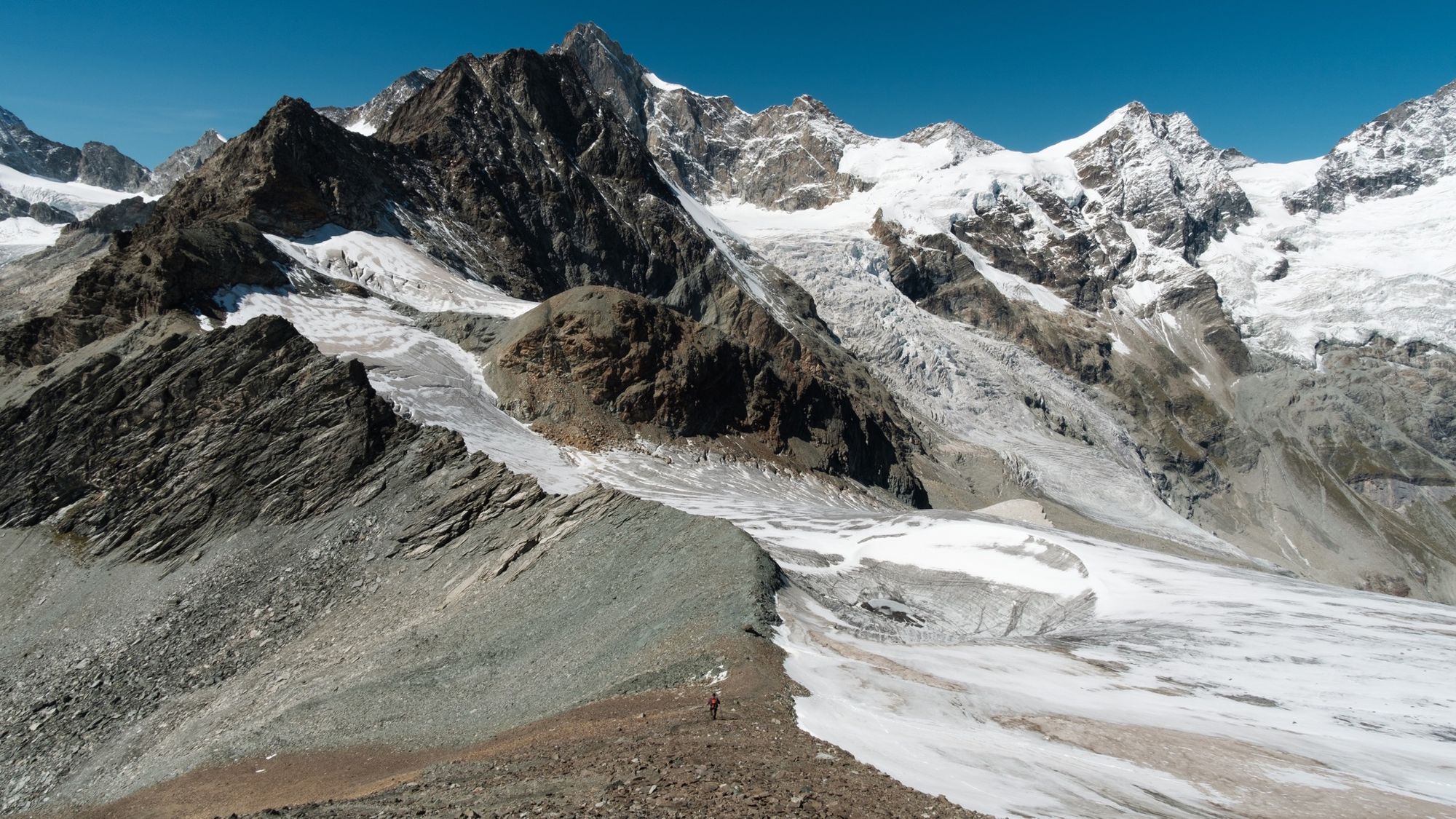
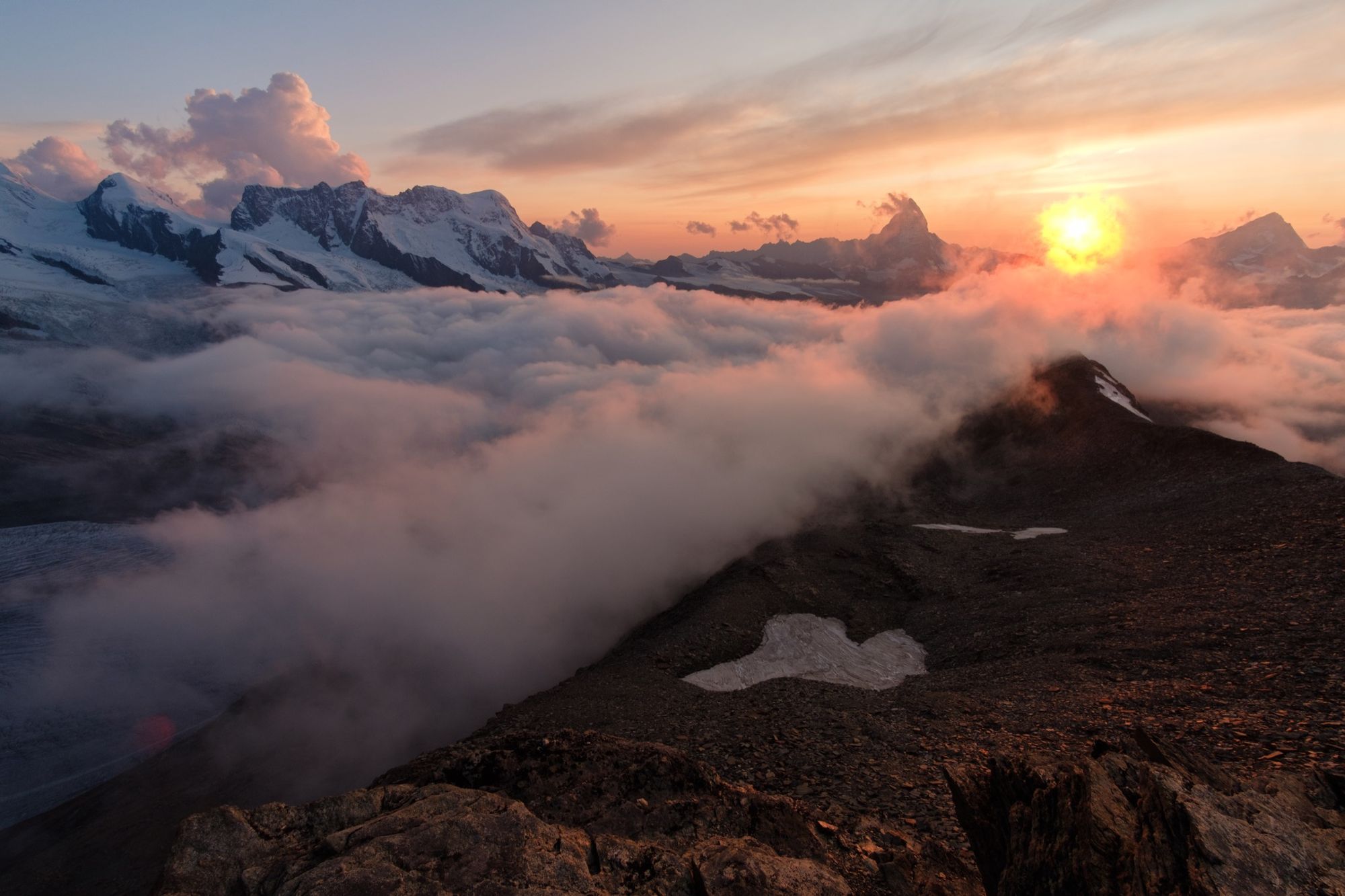
Would any other ultra-wide lens perform as well for subjects like this? Of course – I never need the fast f/2 aperture in daylight. But the Samyang 12/2 is the only ultra-wide lens I have, and I’m glad that it works just as well for daytime landscapes as it does after dark.
The lack of autofocus is not a problem. At such a small focal length, focus at infinity, or just in front of it, and at f/5.6 or f/8 (this lens’s sweet spot for sharpness) everything is in focus from about a metre to infinity. I rarely have to even touch the focusing ring for most subjects.
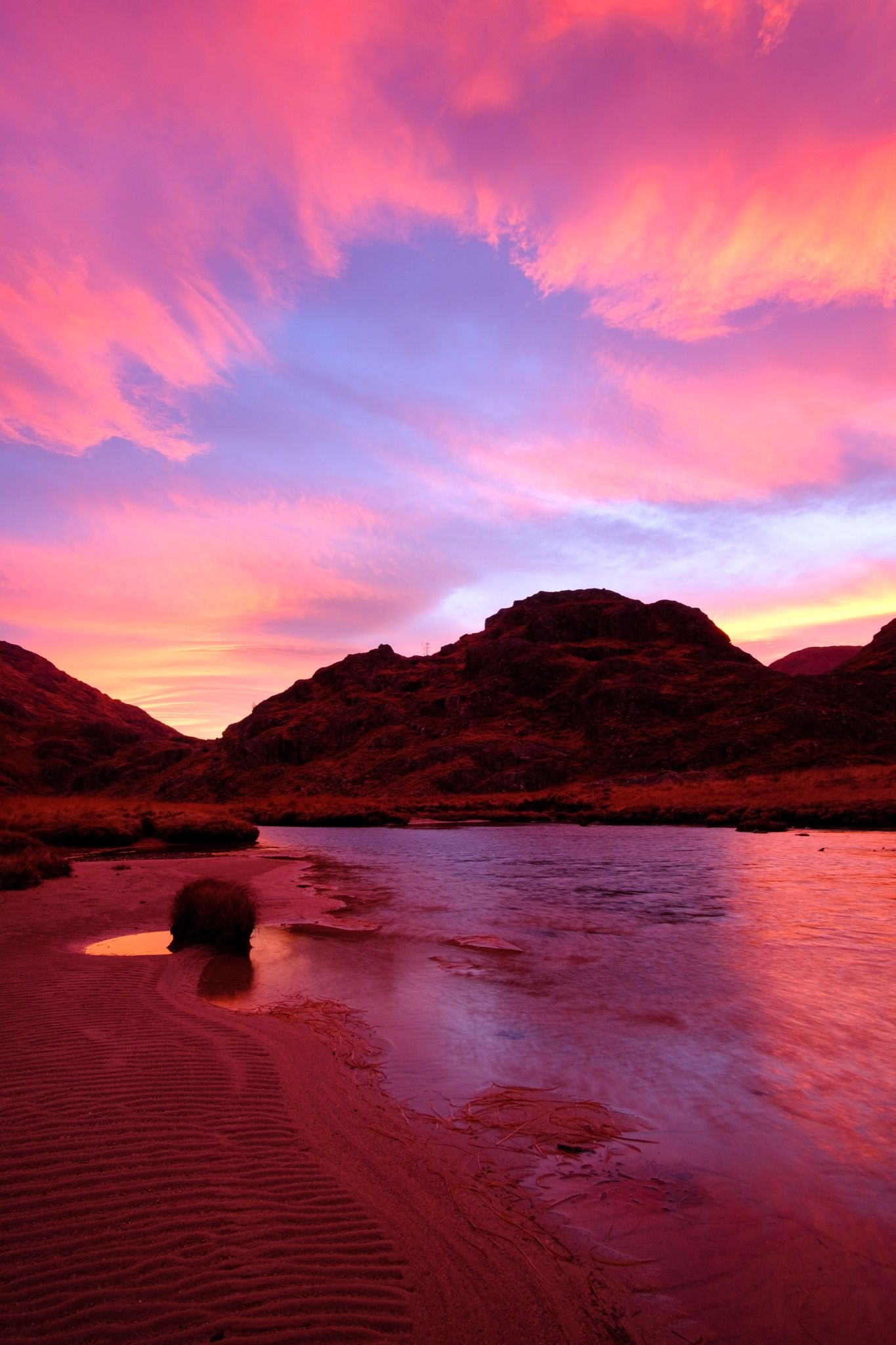
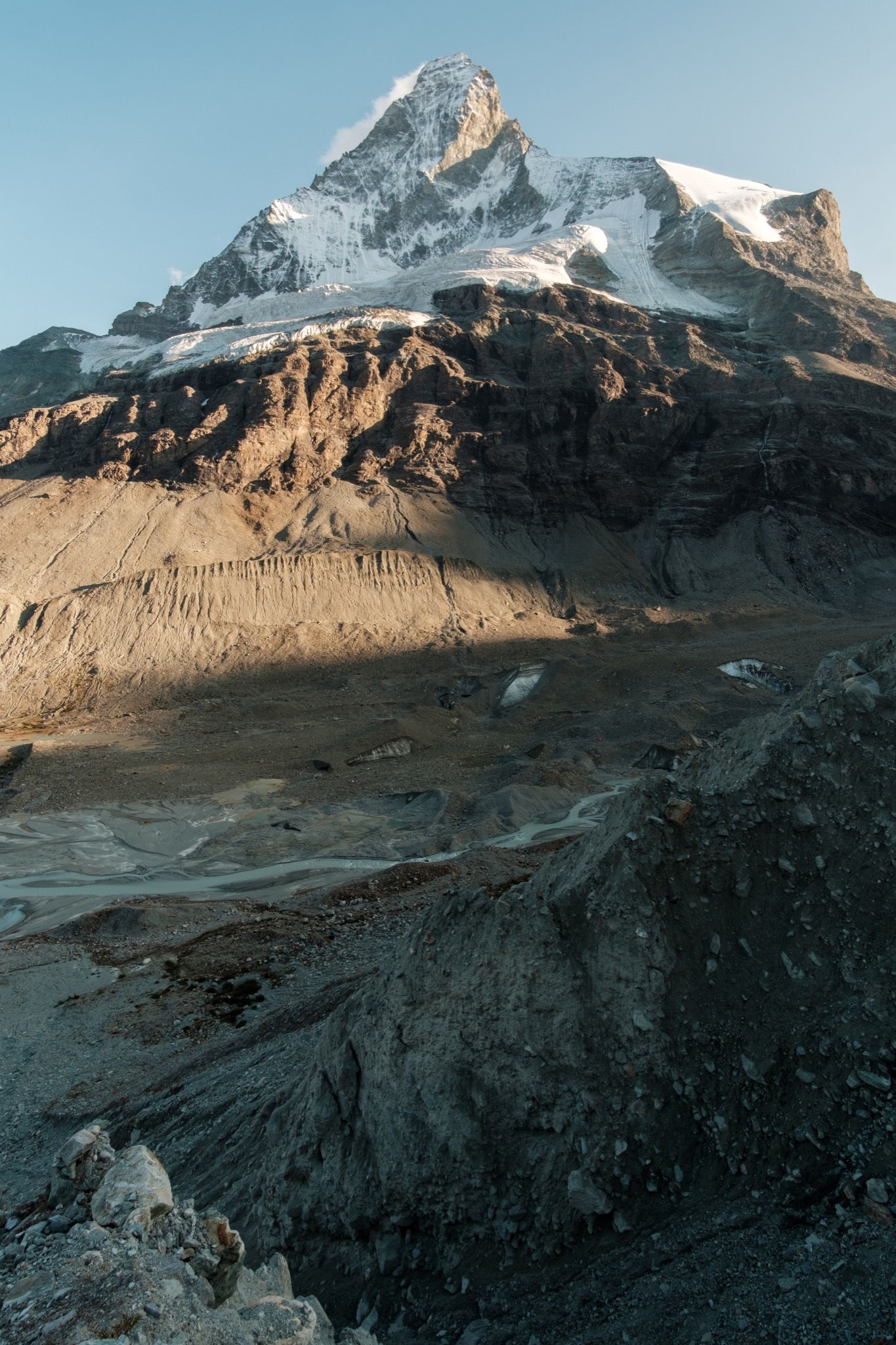
The lens does have some distortion and vignetting (which is especially pronounced at wide apertures). Lightroom has a profile to correct this automatically, but I don’t usually use it as I find the resulting ‘corrected’ image loses the distinctive look that I enjoy in this lens. Vignetting at f/5.6-f/8 is minimal anyway, but the distortion can add drama to images. Some purple fringing can be seen in high-contrast areas at wide apertures, but this is easily fixed in Lightroom.
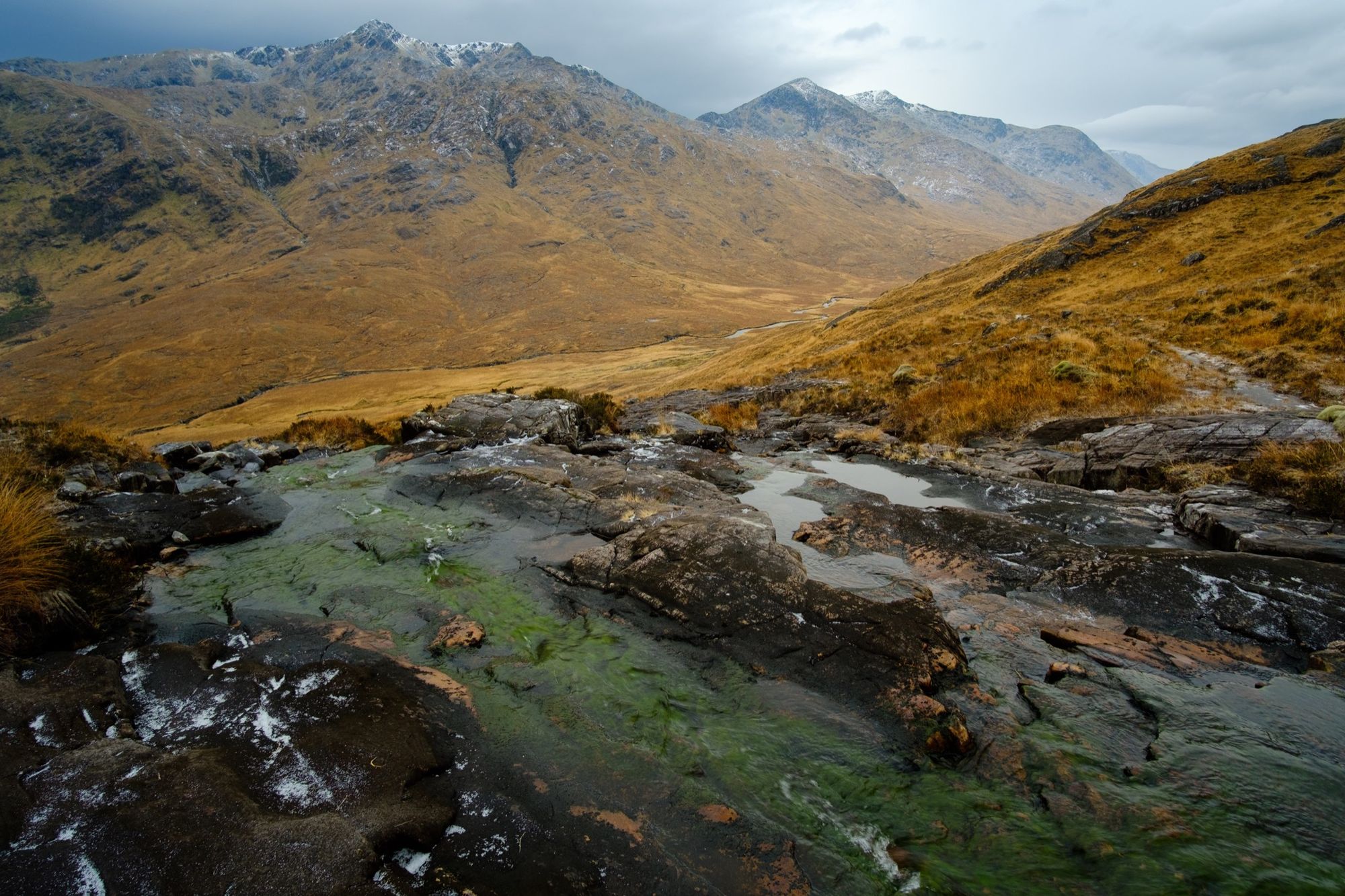
The lens has a simple six-bladed diaphragm. At smaller apertures it creates six-pointed sunstars that aren’t particularly distinctive. If impressive sunstars are your thing then this probably isn’t the lens to use. I don’t care about this so it doesn’t bother me.
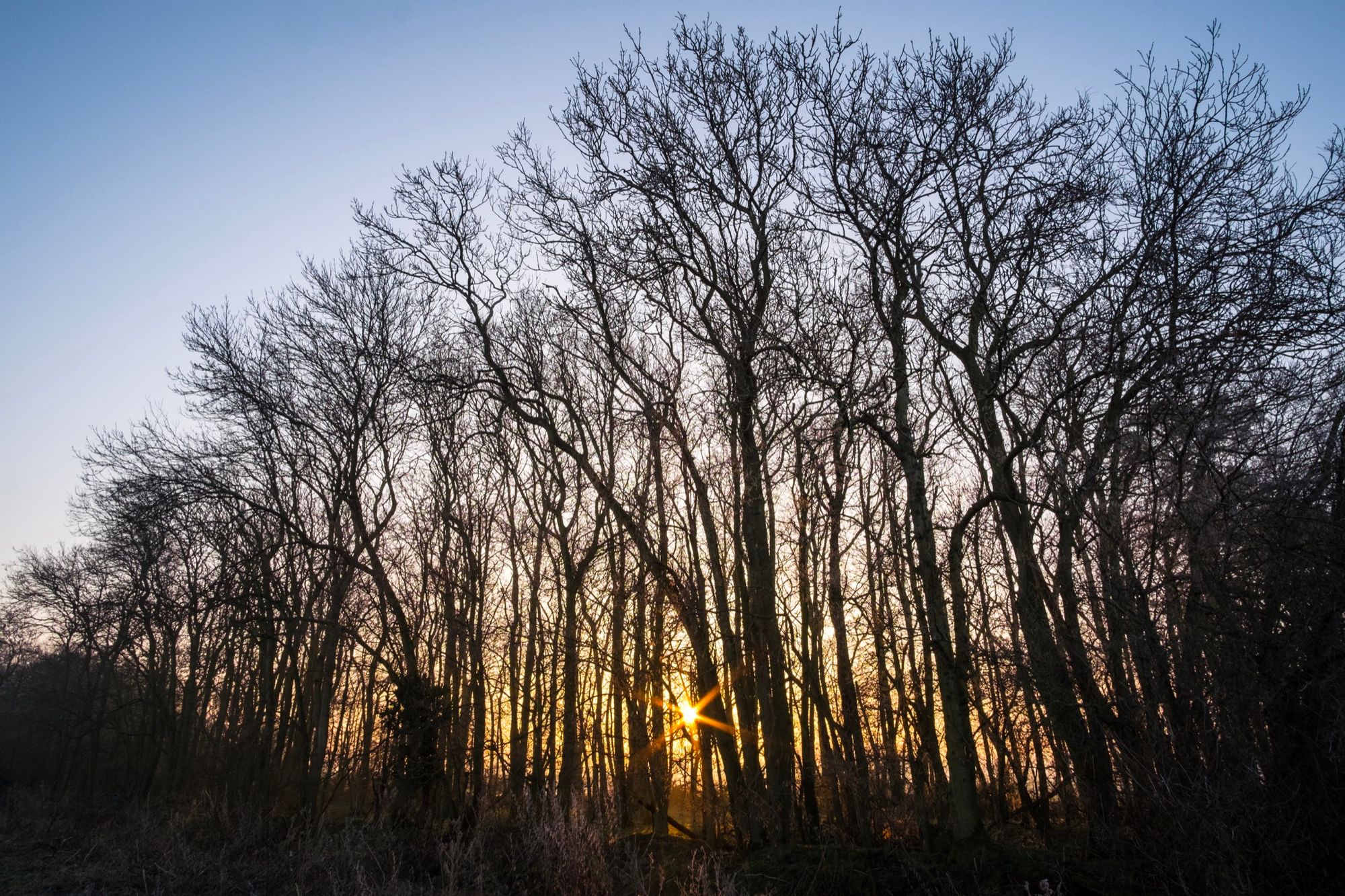
The lens is built well, and as an all-manual lens with no electronics it’s ideal for winter use in the British mountains – great for harsh weather when I don’t fancy carrying a motorised zoom that might fail from moisture ingress. The big lens hood also helps to protect the front element in light rain or snow (I also use a UV filter for protection). Sometimes it’s the only lens I carry. It’s small and light, which makes it perfect as a mountain or backpacking lens.
Gear shots
I’ve found this lens ideal for gear shots and other general outdoor action shots, both of which are staple elements of my work.
It’s good for getting in really close while still showing some environmental context.
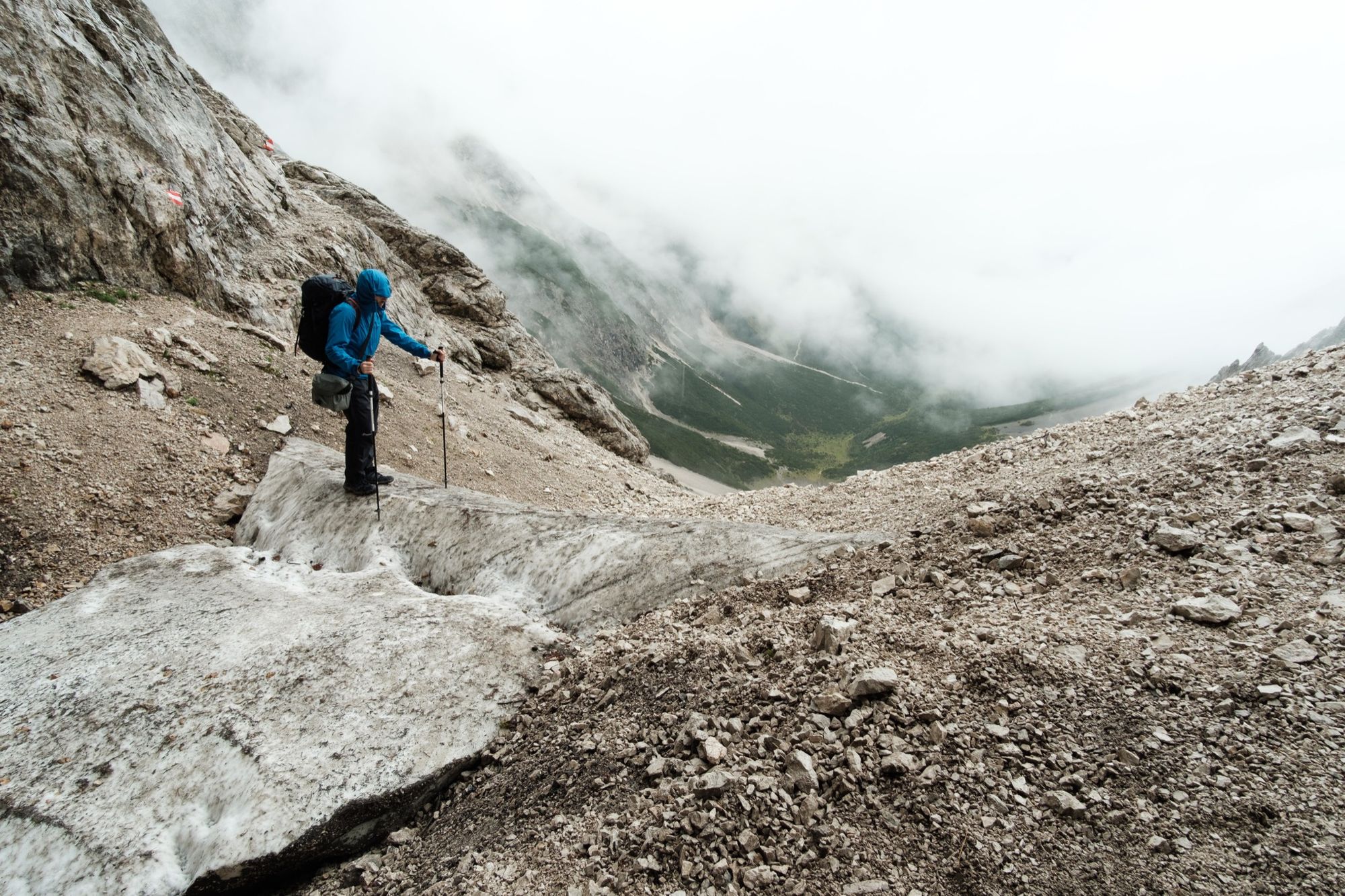
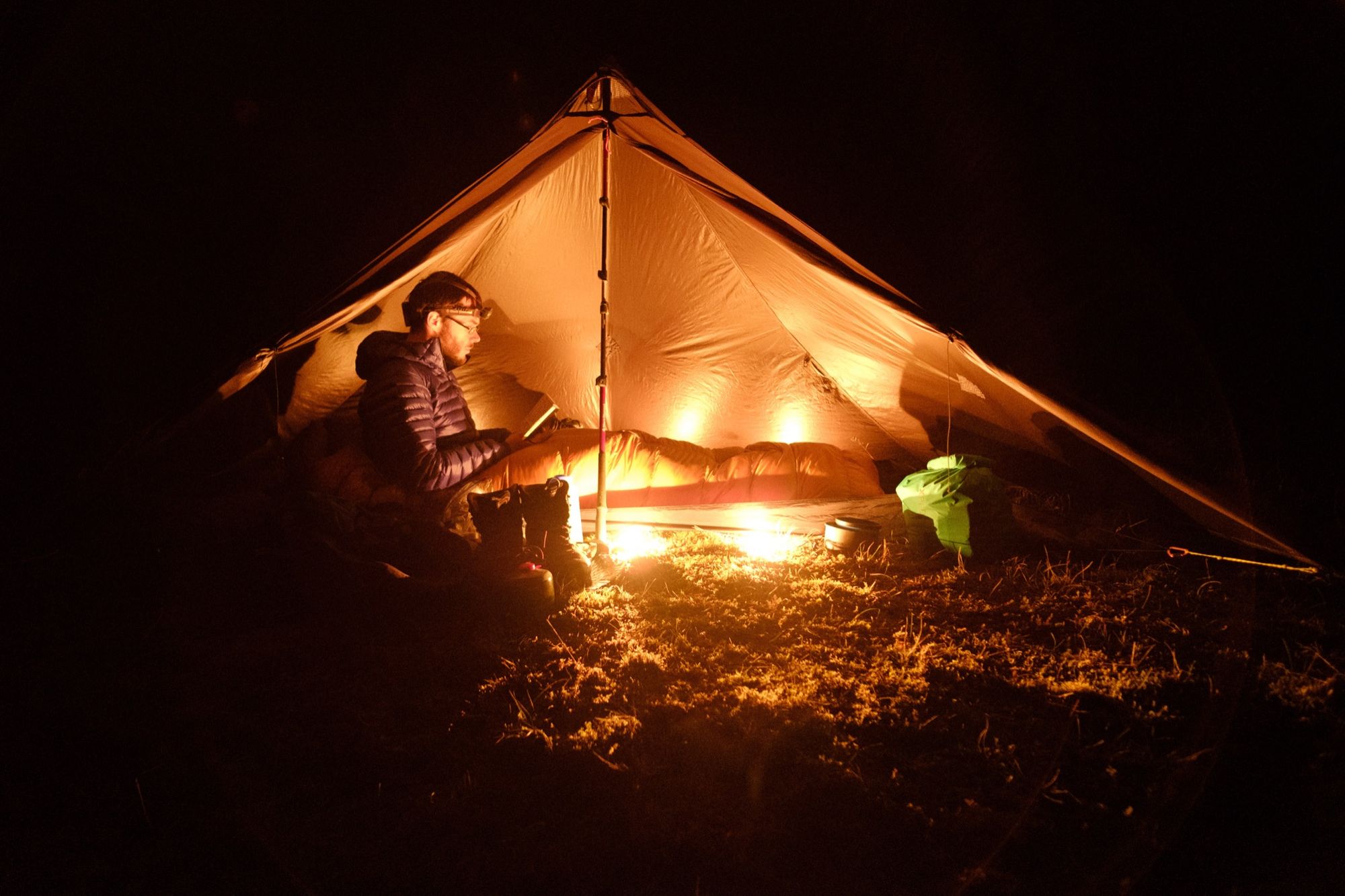
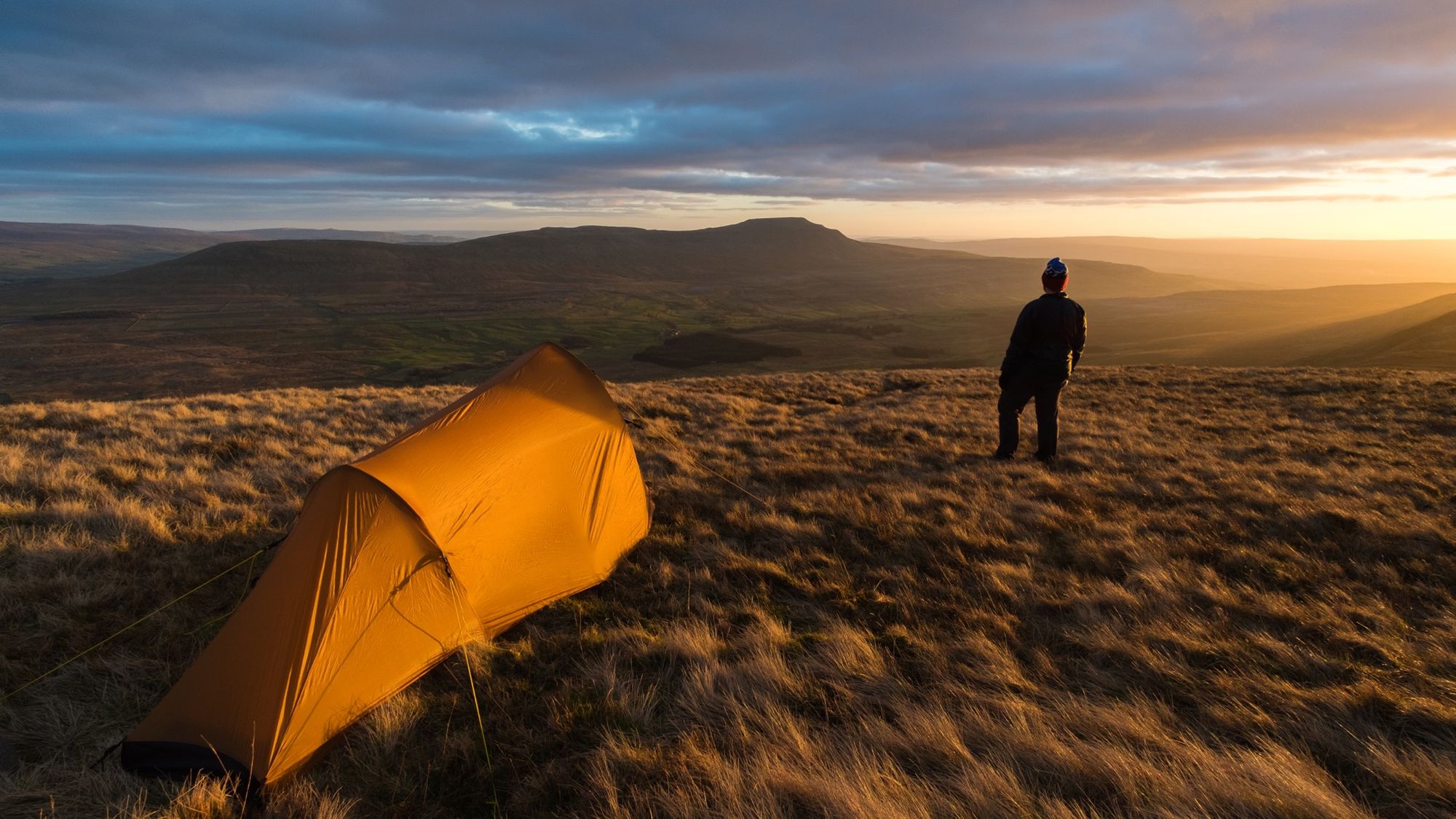
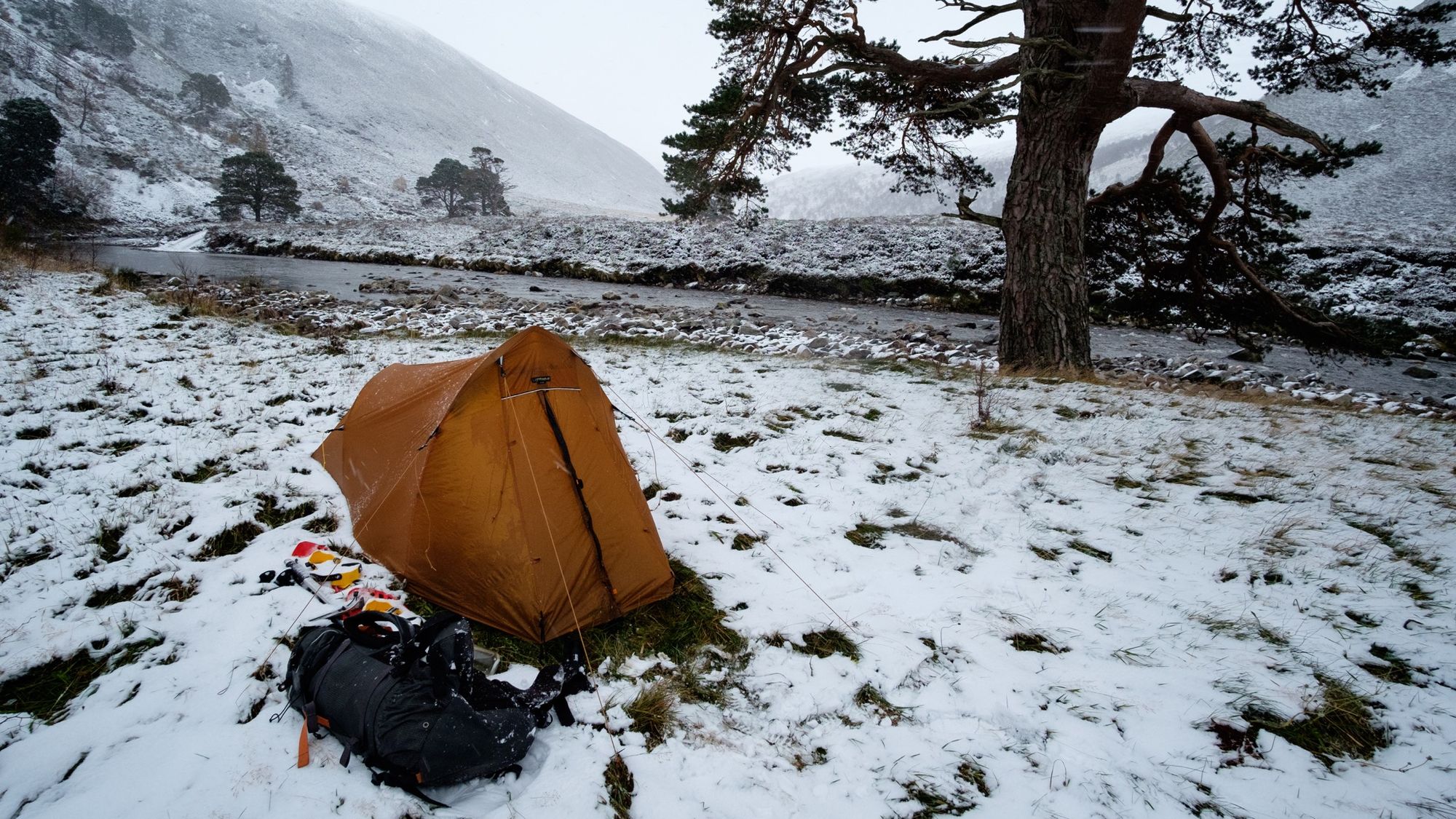
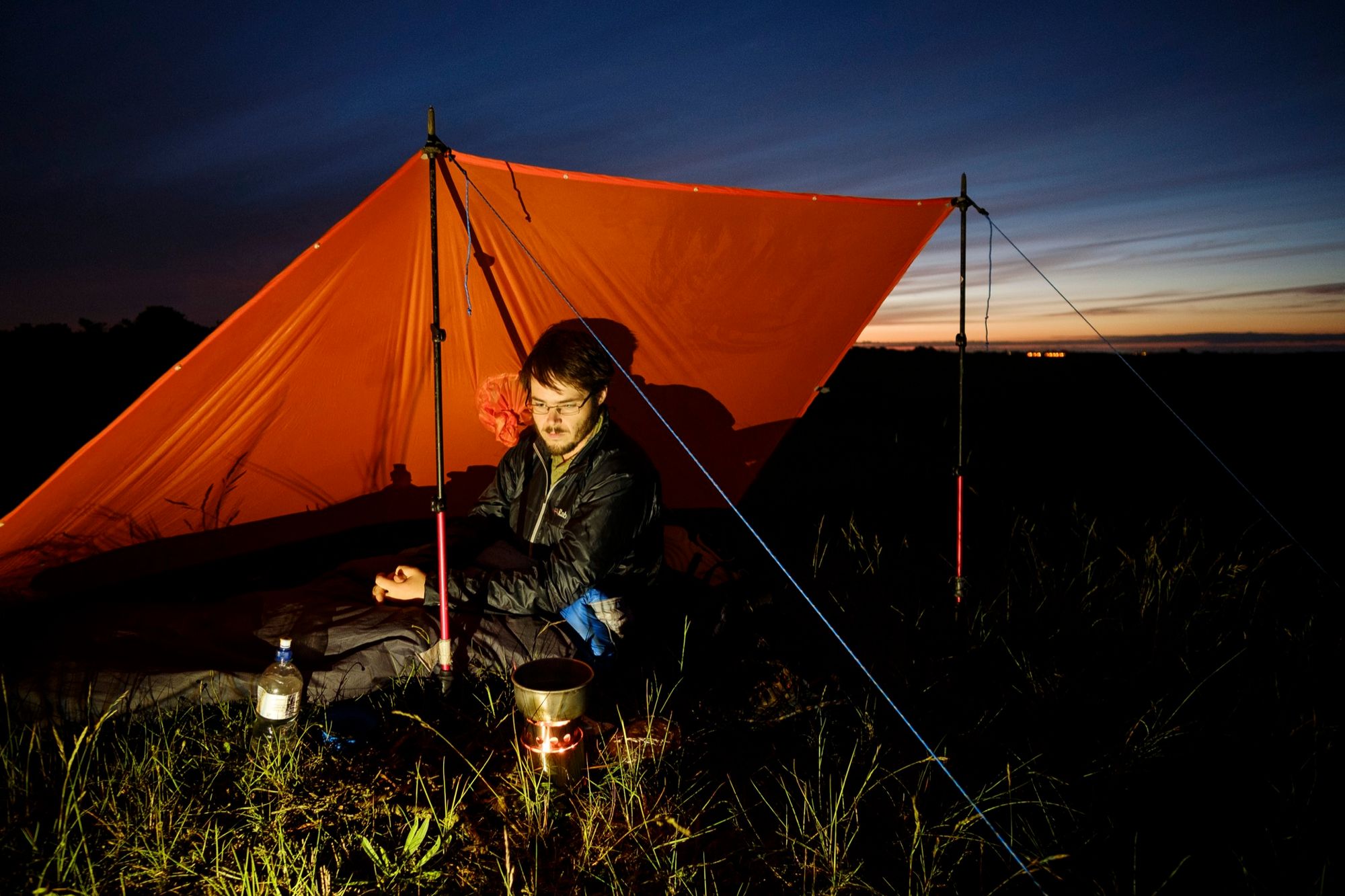
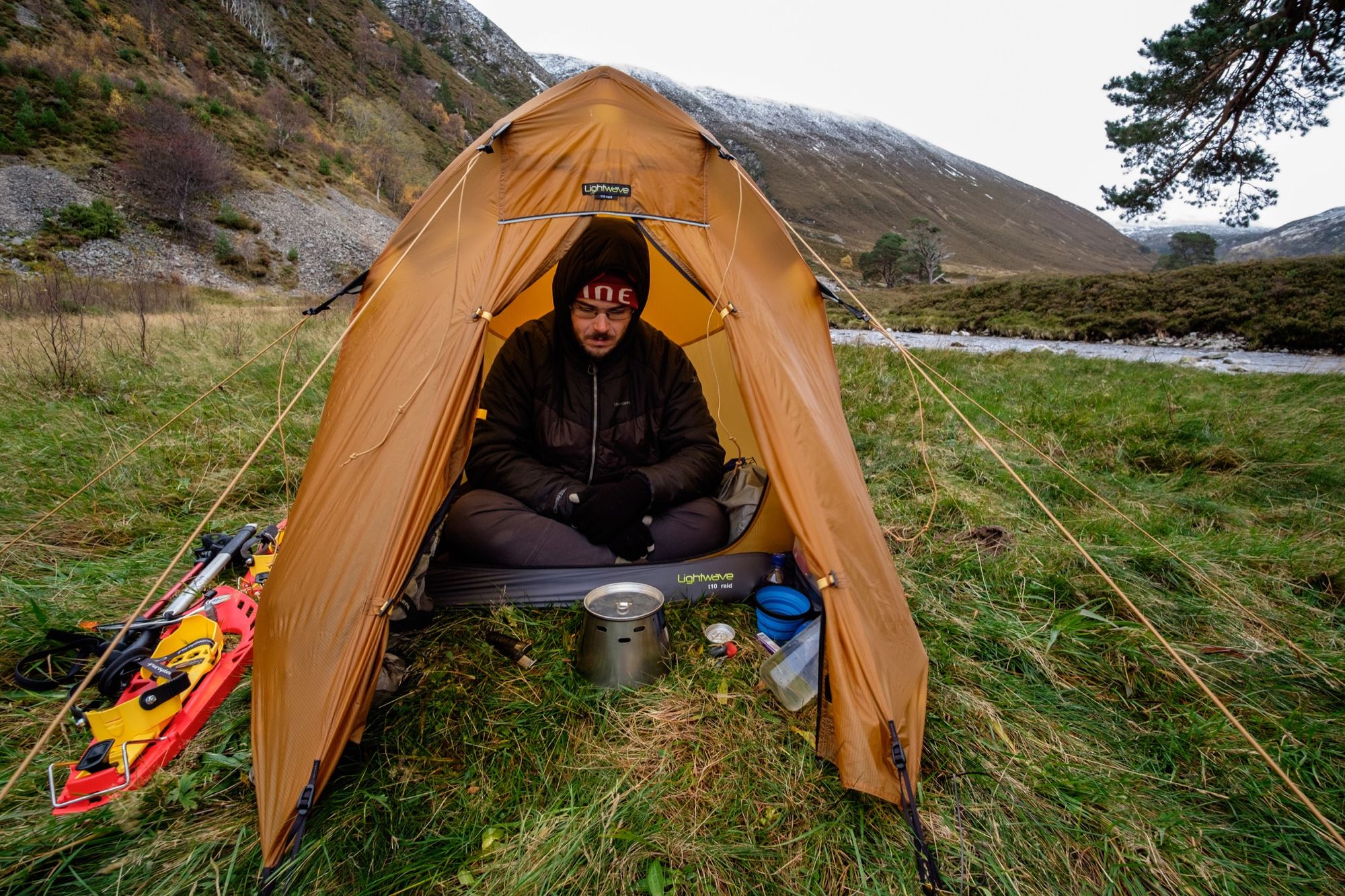
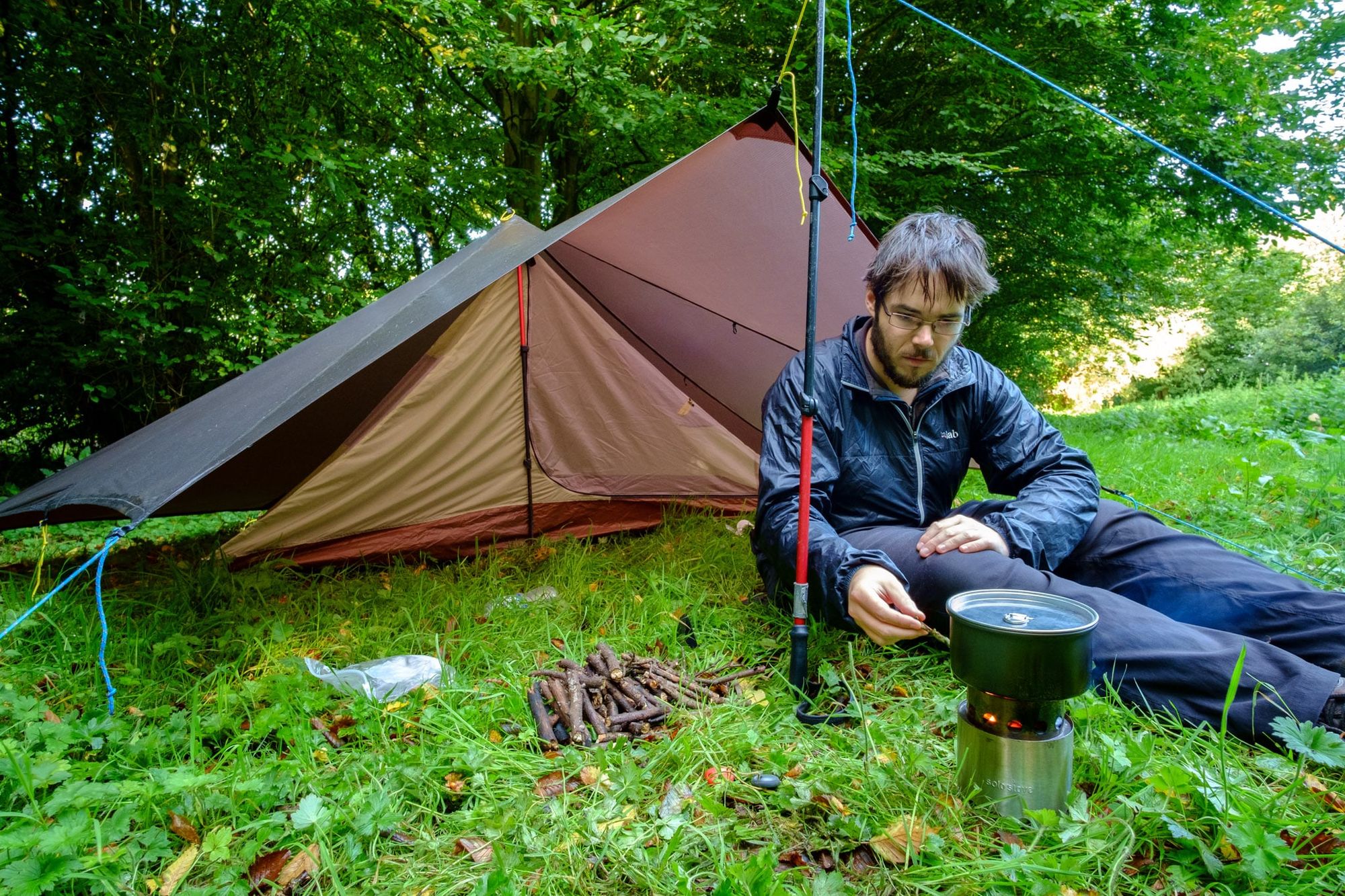
Interiors
Although I don’t use it for this purpose often, the wide angle of view is just the ticket for capturing interior spaces where a tighter lens would struggle.
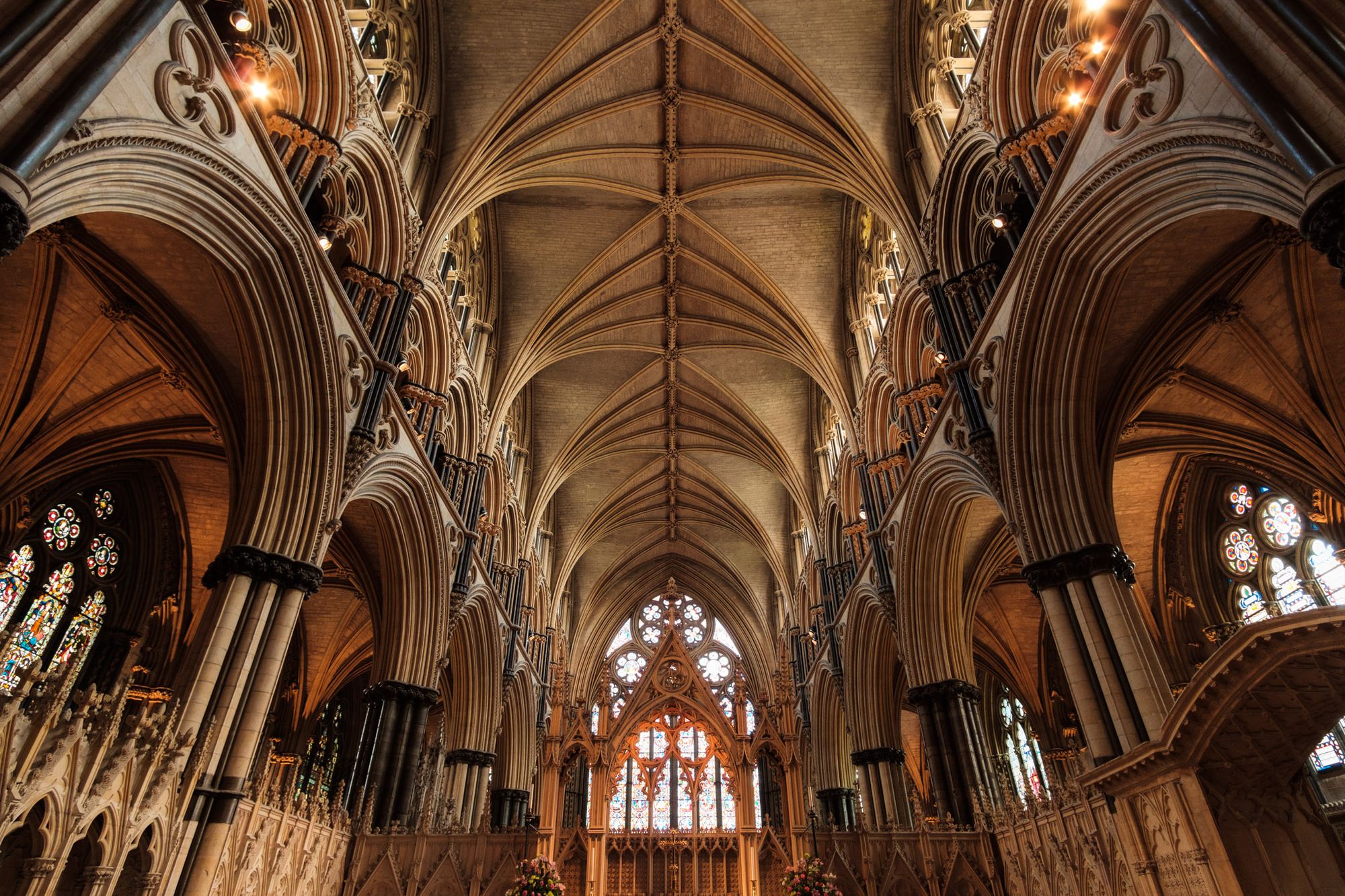
Niggles
No lens is perfect, and as a budget lens the 12/2 has a few drawbacks and areas for improvement.
- While the manual focusing ring is a plus point for me, I wish it actually stopped at infinity – on every sample. This would make infinity focus by feel, in the dark, even easier.
- While we’re at it, some depth-of-field markings would be handy too (although experienced photographers won’t need them).
- A metal filter thread would be more durable in the long term than a plastic one.
- Some people might prefer all-metal construction. I don’t particularly mind the plastic build – it makes for a lighter lens.
- Although I have no complaints regarding image quality, I’ve heard that some samples are less than stellar in terms of sharpness. I’ve seen reports online of decentred samples. Some photographers may prefer less distortion and vignetting too, although correcting them may result in a bigger and heavier lens.
Overall, I’ve come to love this lens and I think it strikes a very attractive compromise for a lot of photographers. Three of my top five images of 2018 were shot with it, and two of my top five from the previous year. When I switched to the Sony a6300 it was the first additional lens I bought for the system as I knew I’d get a lot of use out of it. I can’t wait until the next time I take it into the mountains.
Further reading: Night Photography with the Samyang 12mm f2 by Chris Townsend. Chris’s needs closely resemble my own, so this blog post carried much weight when I was researching possible astro lenses back in 2016.
Alex Roddie Newsletter
Join the newsletter to receive the latest updates in your inbox.


